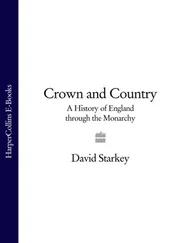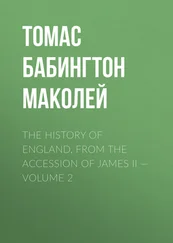Samuel Gardiner - A Student's History of England, v. 2 - 1509-1689
Здесь есть возможность читать онлайн «Samuel Gardiner - A Student's History of England, v. 2 - 1509-1689» — ознакомительный отрывок электронной книги совершенно бесплатно, а после прочтения отрывка купить полную версию. В некоторых случаях можно слушать аудио, скачать через торрент в формате fb2 и присутствует краткое содержание. Издательство: Иностранный паблик, Жанр: История, foreign_antique, foreign_prose, на английском языке. Описание произведения, (предисловие) а так же отзывы посетителей доступны на портале библиотеки ЛибКат.
- Название:A Student's History of England, v. 2: 1509-1689
- Автор:
- Издательство:Иностранный паблик
- Жанр:
- Год:неизвестен
- ISBN:нет данных
- Рейтинг книги:3 / 5. Голосов: 1
-
Избранное:Добавить в избранное
- Отзывы:
-
Ваша оценка:
- 60
- 1
- 2
- 3
- 4
- 5
A Student's History of England, v. 2: 1509-1689: краткое содержание, описание и аннотация
Предлагаем к чтению аннотацию, описание, краткое содержание или предисловие (зависит от того, что написал сам автор книги «A Student's History of England, v. 2: 1509-1689»). Если вы не нашли необходимую информацию о книге — напишите в комментариях, мы постараемся отыскать её.
A Student's History of England, v. 2: 1509-1689 — читать онлайн ознакомительный отрывок
Ниже представлен текст книги, разбитый по страницам. Система сохранения места последней прочитанной страницы, позволяет с удобством читать онлайн бесплатно книгу «A Student's History of England, v. 2: 1509-1689», без необходимости каждый раз заново искать на чём Вы остановились. Поставьте закладку, и сможете в любой момент перейти на страницу, на которой закончили чтение.
Интервал:
Закладка:
9. The Pilgrimage of Grace. 1536-1537.– Slight as these changes were, they were sufficient to rouse suspicion that further change was impending. The masses who could neither read nor write were stirred by the greed and violence with which the dissolution of the smaller monasteries was carried on, and by the cessation of the kindly relief which these monasteries had afforded to the wants of the poor. A rumour spread that when Cromwell had despoiled the monasteries he would proceed to despoil the parish churches. In the autumn of 1536there was a rising in Lincolnshire, which was easily suppressed, but was followed by a more formidable rising in Yorkshire. The insurgents, headed by Robert Aske, called it the Pilgrimage of Grace, and bore a banner embroidered with the five wounds of Christ. They asked among other things for the restoration of the monasteries, the punishment of Cromwell and his chief supporters, the deprivation of the reforming bishops, the extirpation of heresy, and the restoration of the Papal authority in a modified form. Their force grew so large that the Duke of Norfolk, who was sent to disperse it, did not venture to make the attempt, and the king found himself obliged to issue a general pardon and to promise that a Parliament should meet in the North for the redress of grievances. On this the insurgents returned home. Early in 1537Henry, who had no intention of keeping his word, took advantage of some new troubles in the North to declare that his engagement was no longer binding, and seized and executed, not merely the leaders, but many of the lesser supporters of the insurrection. Of the Parliament in the North nothing more was heard, but a Council of the North was established to keep the people of those parts in order, and to execute justice in the king's name.
10. Birth of a Prince. 1537.– In 1537Jane Seymour gave birth to a boy, who was afterwards Edward VI. Henry had at last a male heir of undoubted legitimacy, but in a few days his wife died.
11. The Beginning of the Attack on the Greater Monasteries. 1537-1538.– The failure of the Pilgrimage of Grace brought in fresh booty to Henry. Abbots and priors who had taken part in it, or were accused of doing so, were hanged, and their monasteries confiscated. Where nothing could be proved against the greater monasteries, which had been declared by Parliament to be free from vice, their heads were terrified into an appearance of voluntary submission. Cromwell had his spies and informers everywhere, and it was as easy for them to lie as to speak the truth. In 1537and 1538many abbots bowed before the storm, and, confessing that they and their monks had been guilty of the most degrading sins, asked to be allowed to surrender their monasteries to the king. Cromwell's commissioners then took possession, sold the bells, the lead on the roof, and every article which had its price, and left the walls to serve as a quarry for the neighbourhood. The lands went to the king. It not unfrequently happened that Henry promoted to ecclesiastical benefices those monks who had been most ready to confess themselves sinners beyond other men. There is no doubt that the confessions were prepared beforehand to deceive contemporaries, and there is therefore no reason why they should deceive posterity.
12. Destruction of Relics and Images. 1538.– The attack on the monasteries was accompanied by an attack on relics and such images as attracted more than ordinary reverence. The explanation of the zeal with which they were hunted down is in many cases to be found in the gold and jewels with which they were adorned. Some of them were credited with miraculous powers. The figure of the Saviour on the rood at Boxley, in Kent, moved its head and eyes. A phial at Hales, in Worcestershire, contained a substance which had been brought from Germany in the thirteenth century, and was said to be the blood of the Saviour. Pilgrims thronged in numbers to adore, and their offerings brought in no small profit to the monks who owned such treasures. What was fondly believed by the common people was derided by critical spirits, and Henry was well pleased to destroy all reverence for anything which brought credit to the monks. The rood of Boxley was exhibited in London, where the Bishop of Rochester pulled the wires which caused its motions, and the blood in the phial of Hales was declared to be no more than a coloured gum. An ancient wooden figure, worshipped in Wales under the name of Darvel Gathern, served to make a fire which burned Friar Forest, who maintained that in spiritual things obedience was due to the Pope and not to the king. Instead of hanging him under the Treason Act (see p. 392) Henry had him burnt as a heretic. It was the first and only time when the denial of the royal supremacy was held to be heresy. When war was made against superstition, the shrine of St. Thomas of Canterbury could hardly be allowed to escape. Thomas was a saint who had bearded a king, and his shrine, which had attracted such crowds of pilgrims that the marks which they left as they shuffled forward on their knees towards it are still to be seen on the stone floor, was smashed, and the bones of the saint burnt. Shrines were usually covered with gold and jewels, and all shrines shared the fate of that of St. Thomas. 4The images in parish churches, not being attractive to the covetous, and being valued by the people for ordinary purposes of devotion, were still left untouched.
13. The Trial of Lambert. 1538.– Henry's violence against monasticism and superstition made him extremely anxious to show his orthodoxy. The opinion held by Zwingli, the reformer of Zürich, that the Body and Blood of Christ were in no way present in the sacrament of the Lord's Supper was now spreading in England, and those who held it were known as Sacramentaries. One of these, John Lambert, was tried before Henry himself. Henry told Lambert scornfully that the words of Christ, 'This is My Body,' settled the whole question, and Lambert was condemned and burnt.
14. The Marquis of Exeter and the Poles. 1538.– Amongst the descendants of the Duke of Clarence was Reginald Pole. 5He had been scandalised by the divorce, had left England, had been made a Cardinal in 1536, and had poured out a torrent of invective against the wickedness of Henry. In the end of 1538Henry, having been informed that some of Pole's kinsfolk had been muttering dissatisfaction, sent them to execution together with his own cousin, the Marquis of Exeter, the son of his mother's sister.
15. The Six Articles. 1539.– Cruel and unscrupulous as Henry was, he was in many respects a representative Englishman, sympathising with the popular disgust at the spread of ideas hitherto unheard of. In a new Parliament which met in 1539he obtained the willing consent of both Houses to the statute of the Six Articles. This statute declared in favour of: (1) the real presence of 'the natural Body and Blood of Christ' in the Lord's Supper; (2) the sufficiency of communion in one kind; (3) clerical celibacy; (4) the perpetual obligation of vows of chastity; (5) private masses; and (6) auricular confession. Whoever spoke against the first was to be burnt; whoever spoke against the other five was to suffer imprisonment and loss of goods for the first offence, and to be hanged for the second. By those who suffered from the Act it was known as 'The Whip with Six Strings.' Cranmer, who was a married archbishop, was forced to dismiss his wife. Bishops Latimer and Shaxton, whose opinions had gradually advanced beyond the line at which Henry's orthodoxy ended, were driven from their sees; but the number of those put to death under the new Act was not great.
Читать дальшеИнтервал:
Закладка:
Похожие книги на «A Student's History of England, v. 2: 1509-1689»
Представляем Вашему вниманию похожие книги на «A Student's History of England, v. 2: 1509-1689» списком для выбора. Мы отобрали схожую по названию и смыслу литературу в надежде предоставить читателям больше вариантов отыскать новые, интересные, ещё непрочитанные произведения.
Обсуждение, отзывы о книге «A Student's History of England, v. 2: 1509-1689» и просто собственные мнения читателей. Оставьте ваши комментарии, напишите, что Вы думаете о произведении, его смысле или главных героях. Укажите что конкретно понравилось, а что нет, и почему Вы так считаете.












